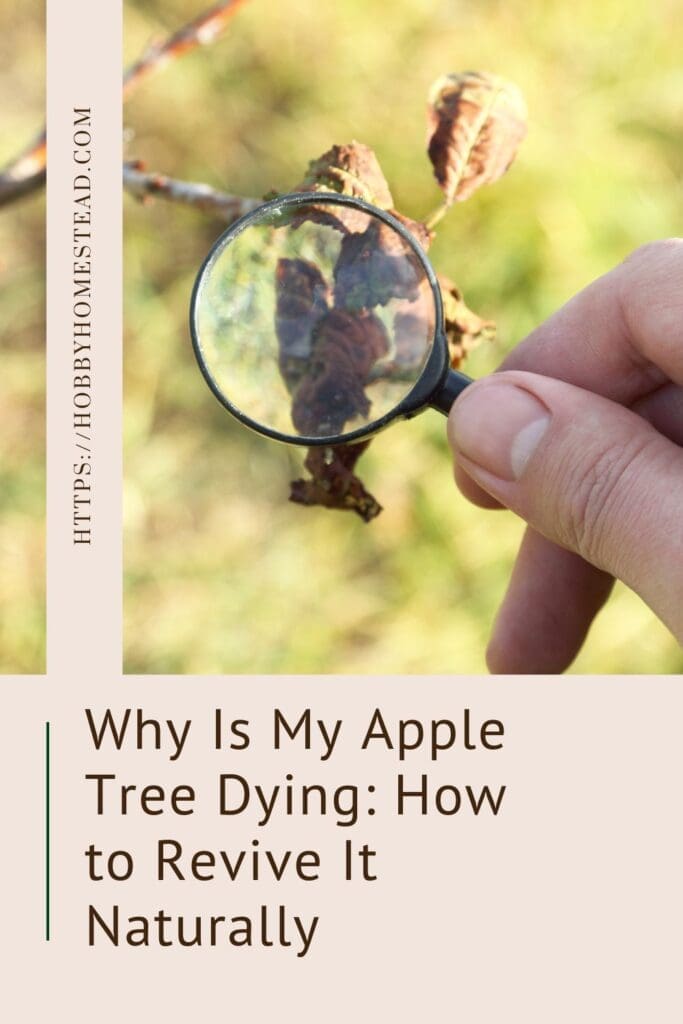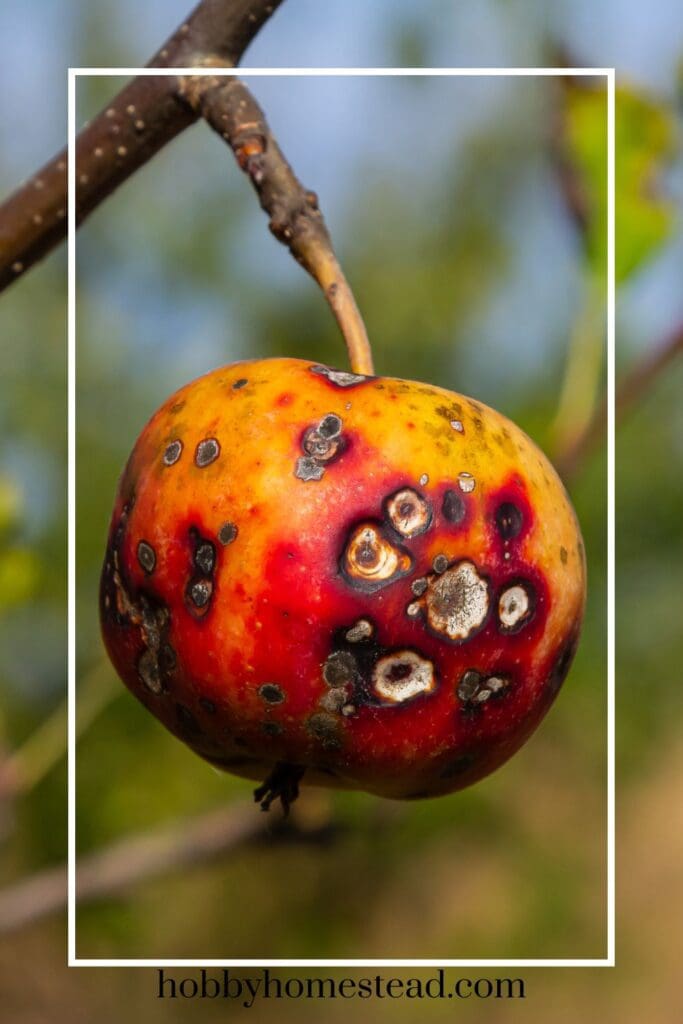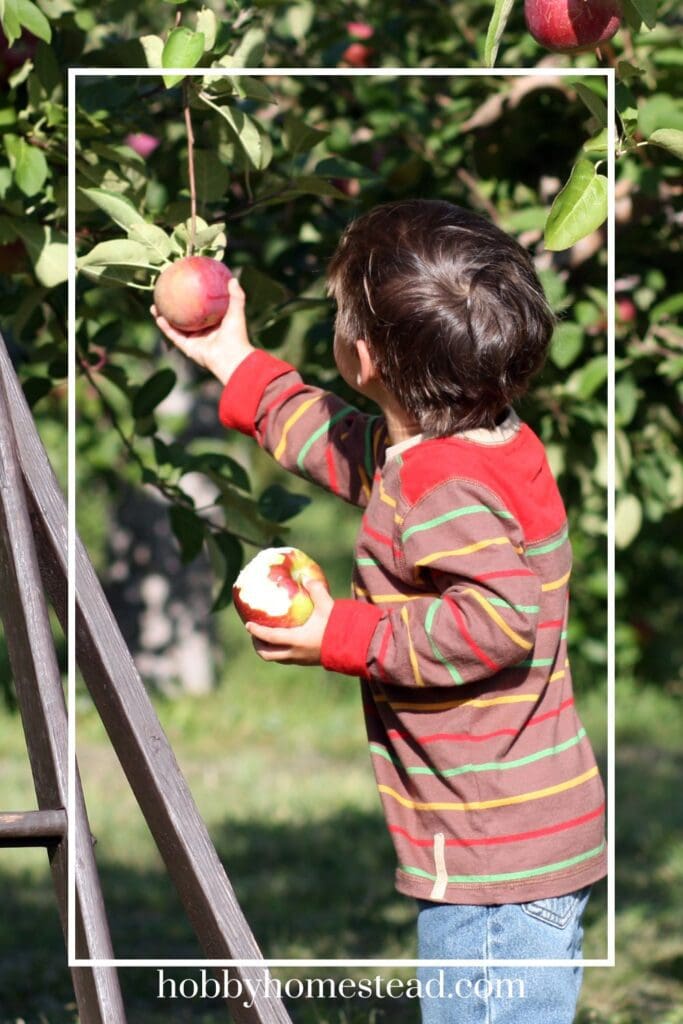If your apple tree looks like it’s struggling, you may be wondering, “Why is my apple tree dying?” The good news is that there are natural ways to revive it, but first, it’s important to understand the root causes.
For years and years, we’ve had apple trees growing all over our farm. At the back of the farm, there is a patch where the bear gets to the apples before we do. Along the fence lines between our place and the neighbors, there are some delicious varieties. Then we have a few trees growing in our front yard. That one is great for climbing too.
Apple trees can suffer from a variety of diseases and environmental stresses, ranging from bacterial issues like fire blight to fungal infections such as apple scab, powdery mildew, and sooty blotch.
In recent years, problems like sudden apple decline and rapid apple decline have been more prevalent, especially in young trees. Things like climate change, severe drought stress, and late spring frosts can also wreak havoc on apple orchards. Leading to dead branches, small fruit, and overall slow growth.

Signs and Symptoms of a Dying Apple Tree
Let’s get into more of the details on what to watch for in a tree that is showing signs of distress.
There are several signs that an apple tree is in distress. Common issues include slow growth, small fruit, and dead branches.
Where to Look to See “Why Is My Apple Tree Dying”?
Common problems are grouped by the area of the tree affected: shoots; leaves and flowers.
To properly diagnose and treat a dying apple tree, it’s important to identify common symptoms.
Shoots
Signs and Symptoms. The young shoots of an apple tree are often the first place where issues become visible. Fire blight, a common bacterial disease, can cause the tips of the shoots to wilt into a shape resembling a “shepherd’s crook” before turning dark brown or black. This is an especially noticeable issue on a young tree.
Powdery mildew might also affect shoots, covering them in gray-white powdery patches, which stunts their growth.
If the tree is suffering from severe drought stress or winter damage, injured shoots may dry up, weaken, or die back entirely. Fungal diseases like apple canker can cause lesions on the bark and shoot dieback.
Natural Remedies
To treat diseased shoots, pruning is the best option. Trim back the affected shoots during the dormant season to prevent the spread of fungal spores or bacterial infections. Be sure to prune at least 12 inches below visible damage when dealing with fire blight.
Also, maintain good soil health by making sure the tree has access to enough water and isn’t exposed to conditions like root rot due to poor drainage.
Leaves
Signs and Symptoms. Leaves can offer some of the clearest signs that your apple tree is in distress.
Powdery mildew can lead to gray-white powdery patches on young leaves and small leaves.
Apple scab and cedar-apple rust cause round leaf spots or orange spots, with severe infections leading to dead leaves.
You may also notice black spots or sunken brown spots on leaves due to black rot. Fire blight and other bacterial diseases might cause the leaves to wilt, turn reddish-brown, or show brown leaves that fail to fall off.
Climate-related issues like severe drought stress or wet weather in the previous year can also lead to leaf drop or discoloration.
Natural Remedies
For leaf-related diseases like apple scab or cedar-apple rust, regular pruning of affected parts and fallen leaves is essential.
Remove diseased leaves and improve air circulation around the tree to prevent moisture buildup that favors fungal growth.
Enhancing the tree’s immune system by applying organic compost. Make sure to water during droughts to help keep the trees healthy.
If fungal infections persist, spray with organic sulfur or copper-based fungicides during the growing season to protect new growth.

Flowers
Signs and Symptoms. Apple tree flowers can suffer from blossom wilt, especially during a wet spring or if the tree has been affected by fire blight.
Flowers may start to shrivel and die before they can produce fruit. The entire flower cluster might wilt and turn brown, leading to significant damage.
Cedar-apple rust may also cause small spots or orange spots to form on the flowers, weakening their development.
If heat stress or late frosts occur in the late spring, the flowers may prematurely die or fail to bloom at all, reducing the potential for a good harvest.
Natural Remedies
If your apple tree shows signs of blossom wilt or flower dieback, pruning the affected parts is key.
Remove all infected flowers and ensure the tree has good drainage to avoid standing water that encourages fungal infections.
To prevent heat stress, mulch around the tree to keep the roots cool and well-hydrated. It can help protect next year’s blooms.
Pruning and Water is Key
The first step in reviving your apple tree naturally is to prune out affected parts and ensure good drainage at the base of the tree. Providing enough water, especially after wet summers or significant droughts, is key to promoting healthy trees in the next growing season.

Natural Remedies to Revive Your Apple Tree
The first step to reviving your apple tree is identifying and addressing the underlying issue. If the tree is suffering from a fungal infection like apple scab or brown rot, pruning away affected parts during the dormant season can prevent the spread of fungal spores.
Make sure to remove fallen leaves and debris at the base of the tree, as these can harbor diseases that may affect next year’s growth. For root rot or honey fungus, ensuring the tree has good drainage is crucial.
Avoid alkaline soil and consider planting in areas with natural good drainage to prevent further damage.
If your tree is facing environmental stress, like heat stress or little snow cover during the winter, focus on maintaining healthy moisture levels in the soil.
Applying a mulch around the tree can help retain moisture and regulate temperature. Be sure to provide enough water during dry spells, especially in high-density orchards where water competition can be an issue.
For bacterial diseases like fire blight, it’s important to prune out affected parts as soon as you notice symptoms.
Avoid using chemical sprays unless absolutely necessary, and instead focus on boosting the tree’s natural defenses by ensuring proper nutrition and care.
If the tree shows signs of cedar-apple rust or apple canker, removing nearby pear trees or cedar trees that may be hosting the infection is a good preventive measure.
Lastly, if your apple tree suffered winter damage or injured shoots during a rough winter, trim off damaged areas and allow the tree to recover. In some cases, slow growth or small leaves may be a sign that the graft union is not thriving. In this case, consult a horticultural consultant.
Promoting Healthy Tree Recovery
With careful attention to these natural remedies, your tree could start showing signs of recovery. Look for new growth. This leads to healthier fruit production in the next growing season.
By monitoring conditions like wet summers or late July heat waves, you can better protect your apple orchard and ensure a bountiful harvest for years to come.
References
University of Minnesota Extension. Apple Branch Die Back.


